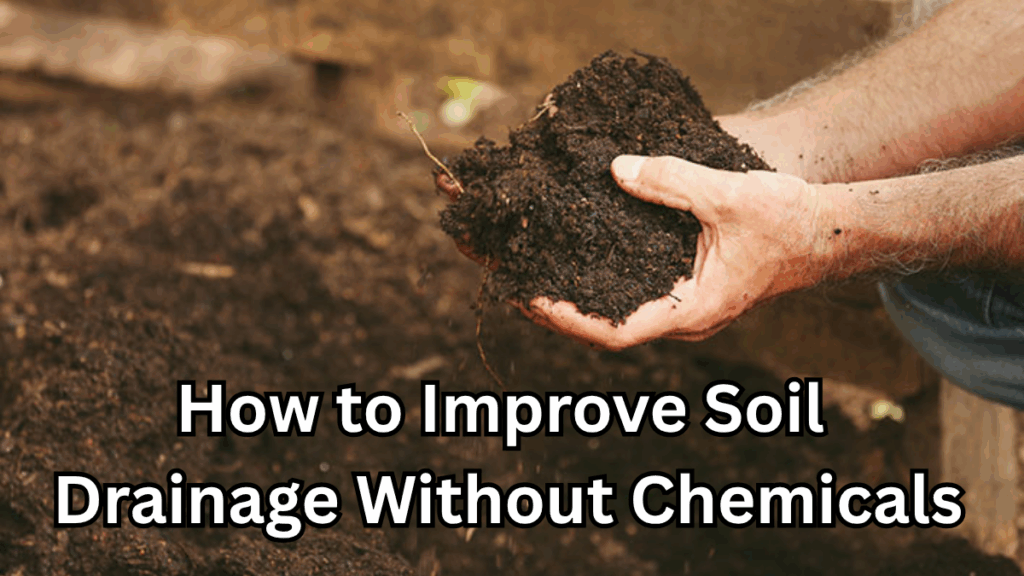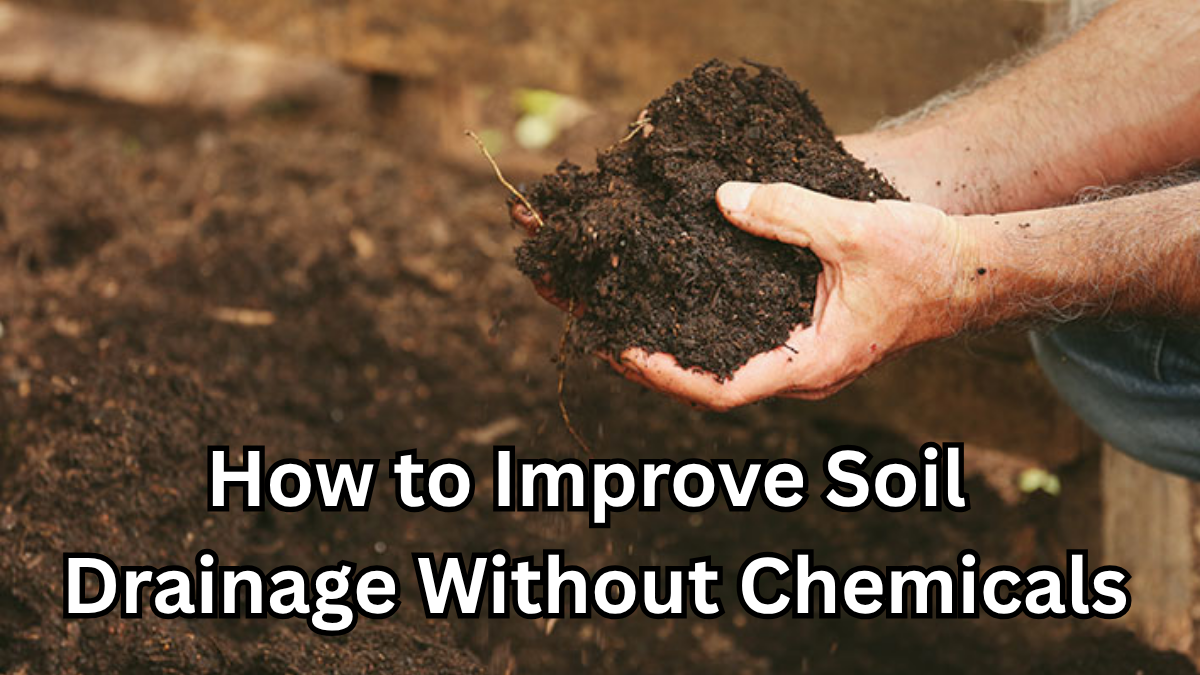Healthy soil is the foundation of a thriving garden. Poor soil drainage can lead to waterlogging, root rot, and stunted plant growth. The good news? You don’t need chemical solutions to fix it. By focusing on natural methods, you can improve soil drainage while enhancing soil care and water management.

Understanding Soil Drainage
Soil drainage is the process by which water moves through the soil. Good drainage ensures that roots receive enough oxygen while preventing water from pooling around them.
Poor soil drainage can result from:
-
Compacted soil
-
High clay content
-
Poor water management
-
Lack of organic matter
Improving soil drainage naturally strengthens your plants and reduces the risk of disease.
Ways to Improve Soil Drainage Naturally
Add Organic Matter
Incorporating compost, well-rotted manure, or leaf mold can improve soil structure, allowing water to pass through more easily.
Benefits of adding organic matter:
-
Enhances soil care
-
Improves aeration
-
Encourages beneficial microorganisms
Use Raised Beds
If your garden soil tends to stay wet, consider creating raised beds. Elevating the soil allows excess water to drain away quickly and keeps roots healthier.
Tips for raised beds:
-
Fill with a mix of soil, compost, and coarse sand
-
Ensure beds are 6–12 inches above ground
-
Use wooden or stone borders to maintain structure
Improve Soil Texture
Amending soil with coarse sand, perlite, or fine gravel can help break up clay-heavy soil. This enhances water movement and prevents waterlogging.
Soil Amendments and Their Benefits
| Amendment | Benefit | Application Tips |
|---|---|---|
| Coarse sand | Improves drainage | Mix 1 part sand with 2 parts soil |
| Perlite | Lightens soil, prevents compaction | Mix evenly into planting beds |
| Fine gravel | Reduces waterlogging | Use at the bottom of pots or raised beds |
Create Proper Water Management Systems
Even soil with good drainage can become waterlogged if excess water isn’t managed. Consider:
-
Installing French drains or ditches
-
Mulching around plants to regulate moisture
-
Avoiding overwatering by monitoring soil moisture regularly
Practice Deep Tilling and Aeration
Aerating your soil helps break up compacted layers, allowing water to move freely. Use a garden fork or mechanical aerator to create small holes throughout your garden beds.
Tips for effective aeration:
-
Aerate during dry conditions
-
Avoid over-tilling to prevent soil structure damage
-
Combine with organic matter for best results
Final Thoughts
Improving soil drainage naturally is all about enhancing soil care and water management. By combining organic matter, proper aeration, and smart water strategies, you can create a thriving garden without relying on chemicals.
FAQs
Q1: How can I tell if my soil has poor drainage?
Look for puddles that remain for hours after rainfall or signs of yellowing and wilting in plants. These indicate waterlogged soil that needs attention.
Q2: Can mulch help improve soil drainage?
Yes! Mulch regulates soil moisture, prevents compaction, and slowly decomposes to improve soil structure.
Q3: How often should I aerate my soil?
Aerate once or twice a year, especially in spring or fall, to prevent compaction and improve water flow.
Q4: Is adding sand always effective for clay soil?
Sand helps, but it must be coarse and mixed properly. Using too much fine sand can create a concrete-like layer, worsening drainage.
Click here to learn more
